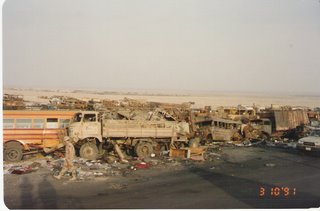I was trying to rent a house in Bangalore (this is a story from the mid 80’s), there were no apartments those days, only houses and my search was not so ably assisted by the few regular estate agents (brokers – that’s what they were called then) around as I was a bachelor (Persona Non Grata of course). Assurances that I was engaged and mostly vegetarian fell on deaf ears until I met Mr Swamy at Mt Ganesh Coffee works in Malleswaram. What a broker was doing in a coffee grinding mill beats me, but I concluded that it was not a very profitable investment and our man was trying his hand at a benifit mankind enterprise to appease the gods…
We conversed mostly in English and Tamil (advantages of hailing from Palakkad) and after a few meetings and home visits found a decent pad around Mahalakshmi layout. I was very thankful to Mr Swamy and the contract signing was duly completed over a cup of filter coffee which Swamy provided using freshly ground coffee from his mill that produced it every blue moon day(I am stretching it now, the coffee must have come from the Krishna cafe next door).
Swamy tells me with all the R’s rolling, “you see, Bangalore was a calm and quiet place, We had no crowds, housing shortages or water problems till they started this train called Island express, It is this one way train from Cochin to Bangalore, you see (Notice the loving use of ‘You see’ often) these Malayalees, I have nothing against them – not trouble creators, nice people really, problem is they all come but never do they pack their bags and go back”. Our man of course was under the assumption that I was a Tamilian.
My rental contract was signed, so what did I have to lose? I could not resist dropping the bombshell on Mr Swamy, “I came to Banaglore on the Island express too”.
The expression on his face was priceless.
P.S – My friend Ganesan tells me that I am probably wrong, he says that had Swamy known I was a Malayali from the beginning, he would have changed the train to Madras mail and the problem to Tamilians coming on it.
We conversed mostly in English and Tamil (advantages of hailing from Palakkad) and after a few meetings and home visits found a decent pad around Mahalakshmi layout. I was very thankful to Mr Swamy and the contract signing was duly completed over a cup of filter coffee which Swamy provided using freshly ground coffee from his mill that produced it every blue moon day(I am stretching it now, the coffee must have come from the Krishna cafe next door).
Swamy tells me with all the R’s rolling, “you see, Bangalore was a calm and quiet place, We had no crowds, housing shortages or water problems till they started this train called Island express, It is this one way train from Cochin to Bangalore, you see (Notice the loving use of ‘You see’ often) these Malayalees, I have nothing against them – not trouble creators, nice people really, problem is they all come but never do they pack their bags and go back”. Our man of course was under the assumption that I was a Tamilian.
My rental contract was signed, so what did I have to lose? I could not resist dropping the bombshell on Mr Swamy, “I came to Banaglore on the Island express too”.
The expression on his face was priceless.
P.S – My friend Ganesan tells me that I am probably wrong, he says that had Swamy known I was a Malayali from the beginning, he would have changed the train to Madras mail and the problem to Tamilians coming on it.






